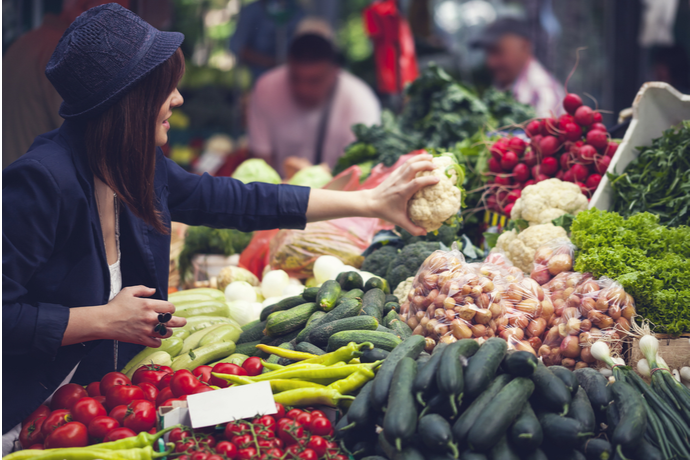
Many plant-based foods are high in FODMAPs, but you can still follow a low-FODMAP diet.
Following an elimination-style diet, like the low FODMAP diet, can be challenging—and it can feel even more difficult when you follow a more restricted eating plan, like a vegetarian diet.
Vegetarians typically avoid animal products like meat, poultry, or fish, and instead focus their diet on plant-based products, like fruits, vegetables, whole grains, and legumes and nuts.
However, many plant-based foods are high in FODMAPs. So before you start a low FODMAP eating plan as a vegetarian, there are a few things to know.

Low FODMAP Fruits and Vegetables
Fruits and vegetables are staples in a plant-based vegetarian diet. However, not all fruits and vegetables are low FODMAP items.
While it’s important to work with your dietitian on exactly which ones to include and avoid when following a low FODMAP diet, try picking up some of these low FODMAP-friendly foods in the produce section:
- Blueberries
- Bell pepper
- Bok choy
- Cantaloupe
- Carrot
- Cucumber
- Eggplant
- Grapes
- Green beans
- Kale
- Kiwi
- Lettuce
- Orange
- Pineapple
- Potato
- Spinach
- Strawberries
- Tomato
- Zucchini

Vegetarian Protein Sources on a Low FODMAP Diet
It’s important to make sure you’re getting enough protein each day—even when you’re following a low FODMAP diet. However, many plant-based protein sources, like legumes, are high in FODMAPs.
Work with your dietitian to determine how much protein you should be getting each day. Together, discuss which foods provide adequate protein while being low in FODMAPs. This may include:
- Canned legumes, like chickpeas or lentils (¼ to ½ cup portions, should be drained and rinsed)
- Cheese, like brie, camembert, cheddar, feta, mozzarella, parmesan, and swiss
- Grains, like buckwheat, polenta, oats, and quinoa
- Eggs
- Lactose-free cottage cheese
- Lactose-free milk
- Lactose-free yogurt
- Nuts, like peanuts, pecans, pine nuts, and walnuts
- Nut butters (almond and peanut)
- Nutritional yeast
- Seeds, like pumpkin, chia, or flax—limit to a maximum of 2 tablespoons per serving
- Soymilk (made with soy protein)
- Tempeh
- Tofu (extra firm only)
Tips for Success
You’ll need to be mindful of portion sizes of each of these foods. Talk to your dietitian about how much of each to include in your low FODMAP vegetarian diet.
The way you prepare you foods also matters. For example, cooking larger legumes, like kidney beans, for longer may help reduce the amount of FODMAPs. And pickling certain foods, like onion and garlic, may make these otherwise off-limit foods more FODMAP-friendly. But it’s not a guarantee—your dietitian can guide you through which types of preparations to try.
When it comes to packaged goods, like canned beans, you may also need to experiment with different brands, as the amount of FODMAPs can vary from brand to brand. You may eventually be able to find one that you can tolerate.
